The Royal Australian Air Force has recently concluded one of the Southern Hemisphere’s largest biennial bi-lateral premier air training programs, Exercise Pitch Black 2018.
Held in Australia’s Northern Territory between 27 July and 17 August, that included air assets operating from RAAF Darwin and Tindal, plus other locations such as the Bradshaw Field Training Area and Delamere Air Weapons Range, to other austere areas such as Batchelor Airfield located in the Top End, being utilized. This year’s Exercise was one of the largest on record with 140 aircraft from 16 different countries, 4000 personnel of which 2500 were Australian, that also included up to 1500 from allies and participating Air Forces.
Exercise Pitch Black is a multi-national large force employment exercise that is pivotal to ensuring Air Forces remain ready to respond whenever called upon. With the use of one of the largest training airspace areas in the world, the exercise included realistic and simulated threats to test and improve force integration.
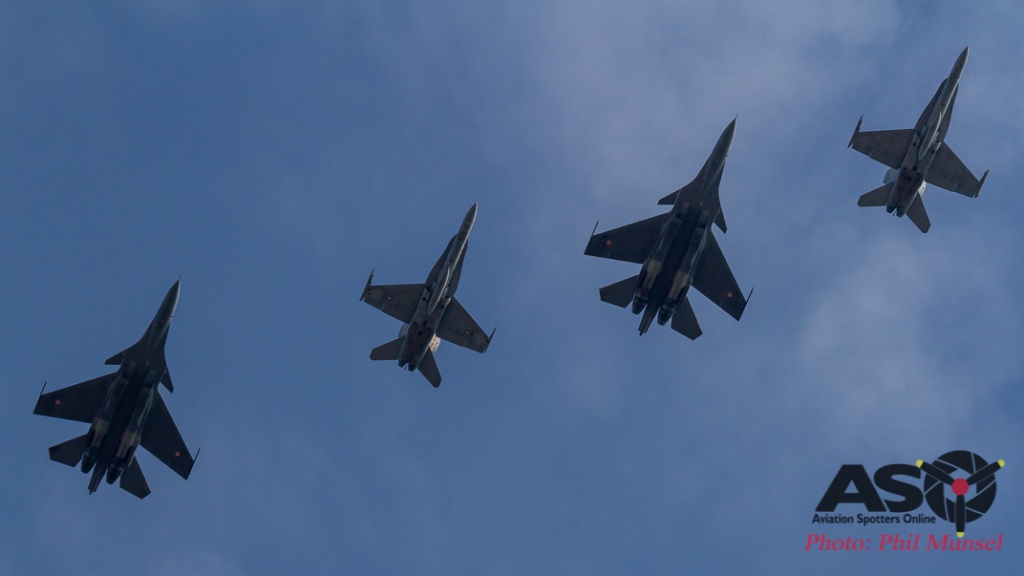
Combination sortie with 2x IAF Sukhoi Su-30MKI’s and 2x RAAF Classic F/A-18 Hornets returning to Darwin, from a training flight
Welcome to Exercise Pitch Black
This year’s exercise included many first time participants such as the Indian Air Force, who brought 4 x Sukhoi Su-30MKI Flankers from No.102 Squadron ’Trisonics’, Chabua Air Force Station, 1 x Lockheed-Martin C-130J-30 Hercules from No.87 Squadron ‘Raiding Raptors’, Panagarh Air Force Station and 1 x Boeing C-17A Globemaster III from 81 Squadron ‘Sky Lords’, Hindon Air Force Station.
INDIAN AIR FORCE – A Brief History
The Indian Air Force (IAF) was officially established on October 8 1932. The IAF recorded its first flight on April 1st 1933, and possessed six Royal Air Force trained officers with nineteen Havai Sepoys (air soldiers), and included an aircraft inventory of four Westland Wapiti IIA army co-operation biplanes located at Drigh Road.
Around the mid 1930’s, what was ostensibly a fledgling formation of outdated aircraft, they found themselves in action supporting Indian army operations against insurgent Bhittani tribesman in Marinshah, North Waziristan.
June 1938 saw a third flight added to bring No.1 Squadron to full strength with their vintage Wapiti biplanes, and remained the sole Indian Air Force Squadron when World War II began, although it’s ranks had now risen to 662 men and 16 officers.
The Chatfield committees proposal that was outlayed in 1939 called for more Royal Air Force squadrons to be based in India, much to the dismay of the IAF that was looking forward to expanding at a quicker pace, instead a scheme was put in place for five coastal defence flights, on a voluntary basis for the protection of principal ports, which resulted in the Indian Air Force volunteer reserve being authorised.
Although there was a shortage of aircraft, five flights were established with No.1 at Madras, No.2 at Bombay, No.3 at Calcutta, No.4 at Karachi and No.5 at Cochin. Eventually a sixth flight was established at Vizagapatanam. Built from a core of RAF and IAF crew, these flights were flown with ex-RAF Wapiti and former No.1 Squadron aircraft after the latter had transitioned to the Hawker Hart.
By March of 1941, Nos 1 and 3 CDFs (Coastal Defence Flights) gave up their Wapitis as these were to be taken on by No.2 Squadron at Peshawar, for Armstrong Whitworth Atlanta transport aircraft, that were to be used to patrol the Sunderbans delta area south of Calcutta.
Meanwhile No.2 CDF had received relinquished DH.89 Dragon Rapides for coastal and convoy work, whilst No.5 CDF took on a single De Havilland DH.86 Express, for patrolling Cape Camorin and the Malabar coast.
The creation of a training structure in India became priority as RAF flying instructors were assigned to local flying clubs to train and instruct Indian Air Force volunteer reserve cadets on the Tiger Moth. Up to 364 students were to receive elementary flying training at clubs situated in British India, including others in various princely states by the end of 1941.
With the push to create and modernise the IAF well underway, No.1 Squadron was afforded conversion to the Westland Lysander at Peshawar, with the inclusion of a full compliment of 12 aircraft within the year via the Bombay war gifts fund. Not long after No.2 and 3 Squadrons converted from the Wapiti to the Audax respectively. With the volunteer reserve inducted into the main core of the Indian Air Force, they initially kept their coastal watch status until Japans entry into World War II in December of 1941.
No.4 flight which had on strength four Wapitis and two Audaxes were dispatched to Burma,to operate from Moulmein. Tragedy quickly struck with four aircraft destroyed due to Japanese bombing, and the flight was eventually replaced by No.3 flight which had re-equipped with ex-RAF Blenheim MkI aircraft, that would provide the sole air cover for shipping entering Rangoon harbour.
February 1942 saw No.1 Squadron arrive in Burma with its Lysander aircraft, that were quickly put to work flying tactical recce missions from Toungoo and Mingaladon. The IAF crews quickly learnt to improvise with 250lb bombs being hung under the wings of the Lysander’s and flew unescorted low level missions against Japanese air bases at Mae-Haungsaun, Cheingmai and Chiangrai in Thailand. This effort was eventually to no avail as the might of the Japanese advance led to the final evecuation of Burma, and No.1 Squadron returning to Risalpur in June of 1942 to convert to the Hawker Hurricane IIB, which was mirrored by associate squadrons at this time.
Between March and December 1942, ten aircrew schools where opened in India, with the first batch of Harvard trainers taken on by No. 1 Flying Training School at Ambala. The aim of the school was to provide basic and advanced instruction for IAF pilots over a 4 and a half month time period.
By the end of 1942, or a decade since the the creation of the Indian Air Force, and three years into World War II, their best efforts only managed to raise five squadrons.
With the coastal defence units disbanded, the IAF had stood up two squadrons (No.7&8) to be re-equipped with the Vultee Vengeance dive bomber which was given operational status in mid 1943. With some teething problems at the start which were quickly eradicated, No.8 Squadron flew the first Vengeance sortie against the Japanese at Double Moorings,Chittagong in December 1943, with No.7 Squadron starting operations in the Arakan shortly after, with both units flying with distinction.
By mid 1944, most Indian Air Force squadrons had either converted to, or already operating the Hurricane,whilst some moved onto their latest acquisition, the Supermarine Spitfire MkVIII. By the end of 1944, the IAF had nine squadrons operational, and with the Hawker Hurricane being the backbone of the combat element, all but most squadrons converted to the Spitfire during early 1945.
During the war years, the service had performed admirably with disruptions against enemy lines and communications, which in turn led to victory.
The service established traditions of courage and efficiency second to none, with no less than 22 Distinguished flying crosses awarded, on top of other decorations in recognition of their service and valor. The service was bestowed with the ‘Royal’ prefix to its title in March 1945 in honour of its wartime contribution.
Post War – A New Beginning
At the close of World War II, the Royal Indian Air Force had on strength 28,500 personnel with some 1,600 officers at its disposal. From late 1945, the RIAF was in the final process of converting all Hurricane equipped squadrons to the Spitfire, and 1946 witnessed the first dedicated transport squadron, No.12, that received C-47 Dakotas at Panagarh AFS. Also during this time of transitional change, manpower was again cut down to almost half to some 14,000 officers and men combined.
August 15, 1947 saw the division of India and the armed forces, with many units stood down, while assets and associated equipment, permanent bases and other establishments transferred to the newly created Royal Pakistan Air Force.
January 1950 witnessed India becoming a Republic within the British Commonwealth, with the ‘Royal” prefix being dropped from its title. The IAF at this time was in possession of six fighter squadrons, comprising of Vampires, Spitfires and Tempests, with one squadron of B-24 Liberators and a flight of C-47 Dakotas. With its British routes firmly ingrained, the Indian Air Force adhered to the training pattern established by the RAF, with most current instructors graduates of the Central Flying School in the UK, or naturally from the No.1 Flying Training School at Hyderabad with their resident Tiger Moths and NA T-6G Harvards, to No.2 FTS at Jodhpur with Harvards and Percival Prentices, to name but just a few of the training establishments already delivering a steady stream of future aviators.
During the period 1953-1957 the government of the day began to seek non traditional /alternative ways of sourcing combat aircraft, as opposed to local manufacture such as the Vampire.
The French Dassault Ouragan fighter was selected, and with an order of 100, the Ouragan, or Toofanis as they were to be known, equipped 3 squadrons from 1953 onwards,until superseded by the Dassault Mystere IVA in 1957. Re-equipment wasn’t only confined to fighter aircraft, as the transport squadrons soon found themselves flying the Fairchild C-119G Packet,which 72 of the type entered IAF service from 1954 onwards. 1957 also witnessed the expansion as the 110 Mystere IVA’s on order were part of an aircraft procurement program including types such as the English Electric Canberra B(I)Mk.58 Bomber, and Hawker Hunter FMk.56 fighter, and included over time their respective updated marks and models.
1960’s – The Build Up
The early sixties saw the Indian Air Force introduce more hardware to its ever increasing arsenal of types flown, with one of the more interesting types operated by the IAF, the Folland Gnat lightweight fighter. Being an aircraft of extreme agility, and considered cost effective, an agreement was signed for its local manufacture with the parent company before local built models where license built by HAL (Hindustan Aeronautics Limited).
There’s no denying the tension that exists between India and Pakistan, and as history has shown, its one that is far from over. September 1st, 1965 witnessed an attack in the Chhamb sector by Pakistani forces. With Pakistani forces holding the upper hand and posing a threat to Indian ground forces, a response was forthcoming from the IAF, with advancing Vampire FBMk.52’s and Mystere IV’s in the mix, the biggest surprise was with an IAF Folland Gnat scoring a kill against a PAF Sabre, which only inflamed and escalated the tension to full scale warfare along the international border between West Pakistan and India.
The September conflict was the first for the IAF since India declared independence, and many lessons gained as a result. The mid 1960’s Indian Air Force was a potent force comprising reinstated new production HAL Gnat aircraft, purchase of the Sukhoi Su-7BM Fitter Ground attack platform, and the Mikoyan Gurevich MiG-21FL Fishbed.
The IAF of 1966 comprised in excess of 70,000 personnel and not far off its goal of 45 active squadrons. 1968 saw another leap with 23 fighter squadrons (categorised), three tactical bomber squadrons, one maritime patrol squadron, eleven transport squadrons, and numerous helicopter squadrons.
A quick breakdown would show the Gnat equipping eight squadrons, six squadrons equipped with the Hawker Hunter, four operating the MiG-21Fl and two on the Mystere IVA, two photo-recce squadrons operating the Vampire T Mk.55 and a sole squadron operating the HF-24 Marut. Bombing elements comprised the Canberra, maritime with outgoing B-24 Liberators with incoming L-1049G Super Constellations, the airlift category consisted of two squadrons of Antonov An-12B’s, three with the C-119G Packet, three of the C-47 Dakota, along with Twin Otters, Caribou’s and the incoming HS.748.
Maturing the Force – The 1970’s
The 1970’s brought with it technological change, and the dawn of another armed conflict that was brewing along the Indo-Pakistani border. As early as 1971 , Governments from both sides protested about airspace incursions along the western border, with altercations coming to a head in late November/early December, when full scale warfare between India and Pakistan occurred.
With the ensuing two week time frame from when hostilities broke out, the IAF had flown approximately 4,000 sorties in the West from its major, and forward bases in Jammu, Kashmir, Punjab and Rajasthan, with a further 1,900 odd flown from the East. The strategy of the IAF during the conflict was to maintain defensive postures around the Northern, and Western fronts, with emphasis placed on a quick turn around in the East. Although Pakistan had initiated the conflict through its pre-emptive strikes against Indian assets, the Indian Air Force showed through initiative that it could quickly, and decisively dominate the skies over both fronts, from lesson’s learned from its training, and the use of employed superior fire power.
The losses incurred by the Indian Air Force were higher than the PAF due to the amount of interdiction sorties flown, and the resulting anti-aircraft fire against the Gnats took its toll.
The MiG-21 that consumed six IAF squadrons where the game changer, and their superiority was demonstrated to great effect. As part of the order of battle, the MiG-21Fl’s were operated in both the Western and Eastern sectors, proving their worth in every engagement. The MiG-21 was employed in many roles including combat air patrols over Vital Points (VP) and Vital Areas (VA), counter-air, escort and close air support tasks, was used as a highly effective platform for short range, precision attack, air defence and interception.
With both sides employing the latest technology throughout their respective air arms, the infamous battle of East meets West occurred during the December 1971 conflict, with the IAF MiG-21’s facing their adversary, the PAF’s Lockheed F-104 Starfighters.
During the 1971 conflict, No.29 and No.47 Squadron MiG-21FL’s had the honour of claiming four victories respectively after downing intercepted F-104’s during aerial engagements over the Rajsthan Desert, and the Gulf of Kutch.

MiG-21UM Fishbed VH-XXI ‘U2146’ wearing the scheme of the Indian Air Force ‘Red Archers Aerobatic Team’, seen here in private hands at the 1995 Australian International Airshow.
1970’s Progression
The mid 1970’s saw the Indian Air Force go about urgent re-equipment requirements to help it progress into the 1980’s and beyond. The modernisation programme would see obsolete equipment and weapons systems replaced with state of the art technology, that was readily available at the time.
With no less than twenty new aircraft types, not including sub types, had made their way into the IAF inventory over the coming years during its renewed expansion and update. This may have included various strike fighters, third generation supersonic interceptors, tri-sonic reconnaissance aircraft, strategic heavy lift transports, medium tactical transports, light transport aircraft, heavy lift and medium assault helicopters, basic trainers, surface to air missiles and a massed array of sophisticated weapons to help project the IAF, or the Bharatiya Vayu Sen, as a force to be reckoned with.
1979 saw one of the more notable changes with the replacement for the IAF’s ageing Canberra and Hunter force arrive, with the introduction of the SEPECAT Jaguar with No.14 and 5 Squadron in the Deep Penetration Strike role, with further squadrons following suit as HAL ( Hindustan Aeronautics Limited) prepared to begin producing Jaguar aircraft in India.
Meanwhile in 1976, another ‘third generation’ type the MiG-21bis, that is considered the definitive variant of this classic fighter, entered Indian Air Force service and assumed the mantle as the nations primary air defence fighter, with sufficient examples acquired in 1976/77 to equip three squadrons that where operating the now outdated Folland Gnat. The MiG-21 variant was used in large numbers by the IAF, with some 580 examples delivered by HAL, and some 250 ‘fly away’ examples that have remained an invaluable asset for over a quarter century serving the nation of India and its Air Force.
Another issue facing the IAF was the role of Tactical Air Strike, and this requirement was met by the selection of the Soviet Unions variable – sweep wing fighter, the Mig-23BN, that was to replace current squadrons operating the Su-7 and HF-24 Marut,that were operating in the offensive air support role, with the MiG-27M/ML also acquired to fulfill the roles of ageing types such as the Ajeet light fighter and again, the Su-7 Fitter, that were optimised for low-level, high speed performance.
1980’s and Beyond – Welcome to the future – Fly – by – Wire
With the onset of the 1980’s, it also brought about change in worldwide economy that progressed with advanced technological changes, that have continued to the present day. Huge leaps in technology, and major leaps in the world of military aviation saw such ‘next gen’ types as the General Dynamics F-16 fighting falcon being developed, and that was coincidentally purchased by the Pakistan Air Force during 1981/82. The response to this action was for the IAF to acquire ‘beyond visual range’ weapons for its fleet of Russian built MiG-23MF aircraft, including two squadrons to be formed on the type, and that for the most part, was an interim solution to the current situation being faced across its border.
The Government at the time looked into finding a solution to counter this problem, and after coming out blank with its counterparts in the East, 1982 arrived with a signed contract, and had found itself a solution with Western technology in the form of the French built Dassault Mirage 2000, a delta wing, fly-by-wire fighter, with high agility and state of the art radar/weapons systems, with the first t of two Squadrons (Nos.1 and 7) equipping with the French lady during the course of 1985/6.
With the Indian Air Force enjoying its current status operating state of the art, fly-by-wire aircraft, an invitation by the Soviet Union was given for IAF pilots to eveluate the latest offering at the time, the Mikoyan Gurevich MiG-29 Fulcrum. After its acceptance of the offer, the IAF was delighted and remarked that the aircraft was “truly outstanding”.
From the onset of the eveluation flight, to a formal understanding and signed agreement between both nations, two years where to pass before the IAF was able to be supplied with its next generation fighter, which introduced a change in the IAF’s procurement of aircraft and technologies that continues to the present day. The number of aircraft serving in the IAF since the 1990’s been decreasing due to losses, or retirement. The Indian Air Force has in recent years been upgrading its fleet of MiG-21, MiG-27 , Jaguar and Mirage 2000 aircraft, including the planned updates for the MiG-29. Some medium lift helicopters comprising of Mil Mi-8, Mi-17 and Mil-Mi-17Vs are slated for future upgrades along with Antonov An-32 transports.
The Future –
The Indian Air Force today is a modern, technological intensive force known for its commitment to excellence and professionalism.
The mission of today’s Indian Air Force is defined by the Armed Forces Act of 1947, the Constitution of India, and the Air Force Act of 1950. It decrees that in aerial Battlespace:
“Defence of India and every part there of including preparation for
defence and all such acts as may be conducive in times of war to
its prosecution and after its termination to effective demobilisation”.
The Indian Air Force is Headquartered in New Delhi, with seven commands located throughout India.
Quarter of aster – Western Air Command – New Delhi , Eastern Air Command – Shillong , Central Air Command – Allahabad , South Western Air Command – Thiruvananthapuram , Southern Air Command – Ghandi Nagar, Training Command – Bangalore and Maintenance Command – Nagpur.
In today’s world, the Air Arm of the Indian Armed Forces, with its complement of personnel and aircraft assets, rank it as one of the the world’s fourth largest. The current order of battle that is the Indian Air Force, in the year 2018, comprises of anywhere between 9 to 16 stations, or Air Force bases, that are located throughout India, with each commanded by an Air Commodore, with a typical Wing having up to two squadrons assigned to it.
Within an IAF Wing, its usually comprised of a command and a squadron. Most times it may comprise of between two or three IAF Squadrons, along with a helicopter Unit, that may also include a Forward Base Support Unit (FBSU). Presently there are roughly 47 wings and 19 FBSUs currently operating within the Indian Air Force, that are typically commanded by a Group Captain.
Squadrons are field units or formations at static locations, with a Squadron comprising 18 aircraft, and are under the control of a Commanding Officer who wears the rank of Wing Commander.
Some transport and helicopter units are under the control by a Commanding Officer holding the rank of Group Captain, and a further breakdown would see Flights as sub – divisions of Squadrons that would be commanded by a Squadron Leader. A flight would consist of two sections, that would be led be a Flight Lieutenant that would consist of three aircraft, that would flow onto service branches for day to day operations and so-forth.
Current Stature
With the Indian Air Force’s current order of battle either receiving upgrades, or in the process of, the future looks promising for the IAF. With the current Helicopter fleet in good stead with the pride of the fleet being the giant Mil-Mi-26 heavy lift helicopter thats operated by No.126 Squadron that delivers with outstanding results, the remaining fleet of medium lift types such as the Mil-Mi-17 and Mi-8 types are all proving their worth within the IAF structure and roles they’re assigned to.
The Chetak/Cheetah fleet has been the mainstay and backbone in the SAR (Search and Rescue), Casualty and Evacuation role within the IAF for many years, with this type being augmented by indigenous designs such as the HAL ( Hindustan Aeronautics Limited) ALH Dhruv helicopter, which has proven very successful, and is also the prime machine for the Sarang Helicopter Display Team. The rotary wings of the IAF are undergoing a major restructure with new procurements coming online such as the CH-47F Chinook helicopter, and the AH-64E Apache Longbow attack helicopters, that will operate alongside the 125 (H) squadron Mil-Mi-25 gunships, and the Mi-35 Hinds of 104 (H) squadron, that were introduced in 1990.
The Indian Air Force at this current time has given the go ahead to ramp up production manufacturing the locally designed HAL Tejas fighters, of which some 324 of the type are on order, with basic trainers such as the Pilatus PC-7 MkII, HAL HJT-36 Sitara pending, and the Airbus A330 MRTT aircraft to replace the current Ilyushin IL-78MD tankers , which are all being considered for the future within the IAF.
With the Royal Australian Air Force announcing the participants who will be attending Exercise Pitch Black 2018 early in the year, and with many excited to hear of what aircraft would be attending, it was interesting, and exciting to see the latest acquisitions of the IAF making their way downunder. As the IAF operates a varied fleet of medium to light transport aircraft types such as the Antonov An-32 Sutlej, the HAL built Dornier Do 228, and the Boeing 737 and Embraer ECJ-135 Legacy aircraft for VIP duties, the IAF sent the Boeing C-17A Globemaster III and the Lockheed Martin C-130J Super Hercules that would support the four Sukhoi Su-30MKI that would also be taking part in this years exercise.
No. 81 Squadron ‘Skylords’
This unit of the Indian Air Force is assigned to Western Air Command, with the Squadron being stood up on September 1 2013 at Hindon Air Force Station. Their motto states ‘ Capable, Powerful, Omnipresent’. The Squadrons main role is to participate in operations that involve the movement and airdrop of troops, equipment, supplies and support of special operations forces when required. The Squadron operates the Boeing C-17A Globemaster III, which was approved by the IAF in 2011 for the purchase of ten aircraft, with the first of the type touching down in India on June 18 2013. The C-17 has enhanced the IAF’s capabilities through its operational potential in terms of its payload and performance, and use during times of disaster and strategic airlift missions. Its role in Exercise Pitch Black 2018 was as a support ferrying personnel and equipment.
No. 87 Squadron ‘Raiding Raptors’
The Indian Air Force has been operating the Lockheed Martin C-130J Hercules with 77 Squadron ‘Veiled Vipers’ from Hindon AFS since 2011. In 2016, No. 87 Squadron was formed as the IAF had suffered some losses, and a new deal was signed for the purchase of six Super Hercules (C-130J-30), that are customised for special operations, and are not suited for routine transport roles. The first of six Hercules touched down in July 2017 and are permanently located at Panagarh Air Force Station, which has been renamed Arjan Singh AFS.
During Exercise Pitch Black 2018, No. 87 Squadron Hercules, which are an AMSOP (Advanced Mobility Special Ops Platform) that operate as part of the IAF’s Special Air Operations Unit, took part in joint tasks with RAAF C-130J Hercules from 37 Squadron and C-17A Globemaster’s form 36 Squadron with insertion and extraction of Special Forces and supply drops in and around the Bradshaw Field training area.
No. 102 Squadron ‘Trisonics’
Equipped with the Sukhoi Su-30MKI and located at Chabua Air Force Station. No. 102 Squadron was formed in August 1981, with its first operational sortie flown on August 25 1981 from Bareilly AFS, when the Commanding Officer of the ‘Trisonics’, A J Singh and with the then Chief of Air Staff, Air Chief Marshal Idris Latif took to the air in a Mikoyan Gurevich MiG-25U Foxbat. The MiG-25 Foxbat was inducted into the Indian Air Force to fulfill the need of strategic reconnaissance in 1981. The IAF operated the MiG-25RB for reconnaissance and the two seat MiG-25U for conversion training, and were known as the ‘Garuda‘ in IAF service. They were employed for top secret missions over hostile territories taking high definition photographs, radar imagery and electronic emissions. The MiG-25RB’s were pure reconnaissance aircraft equipped without any interception capability, and relied solely on their speed, which was around Mach 3.2, and altitude to stay safe. The IAF’s ‘Garudas‘ flew between 10 – 15 sorties per month, and only 42 pilots were to ever qualify to fly the type, with three recorded losses during its tenure with the Indian Air Force. The aircraft’s original calendar life was 15 years, and in 1995 a mid life update was enacted to further the life for another ten years, and again in 2001, a final push was made until the MiG-25 was retired on May 1 2006.
Sukhoi Su-30MKI ‘Flanker – H’
The Su-30MKI is a twin jet multirole air superiority fighter developed by Sukhoi, and licence built by Hindustan Aeronautics Limited (HAL) for the Indian Air Force. Development of the MKI variant begun in 2000 after a deal was signed with Russia, for the manufacture of 140 aircraft, with the first Russian made Su-30MKI inducted into IAF service on September 27 2002. The first indigenously assembled (HAL) Su-30MKI was inducted with the IAF in 2004. A total order of 272 Su-30MKI aircraft are expected, with the present number in service at approximately 249 units.
The Sukhoi Su-30MKI force is well spread throughout the Indian Air Force with many Air Force Stations utilised –
– Bareilly AFS : 15 Wing, No. 8 Squadron ‘Eight Pursoots’ & No. 24 Squadron ‘Hunting Hawks’,
– Bhatinda AFS : 34 Wing, No. 17 Squadron ‘Golden Arrows’ ,
– Chabua AFS : 14 Wing, No. 102 Squadron ‘Trisonics’,
– Halwara AFS : 34 Wing, No.220 Squadron ‘Desert Tigers’ & No.221 Squadron ‘Valiants’,
– Jodhpur AFS: 32 Wing, No.31 Squadron ‘Lions’,
– Lohegaon AFS : 2 Wing, No.20 Squadron “Lightning’ & No. 30 Squadron “Rhinos’,
– Bhuj AFS : 27 Wing, No.15 Squadron ‘ Flying Lancers’,
– Tezpur AFS: 11 Wing, No.2 Squadron ‘ Winged Arrows’,
– Maharajpur AFS: 40 Wing, TACDE (Tactics and Air Combat Development Establishment).
No. 102 Squadron ‘ Trisonics’ was given the honor of being the first Su-30MKI unit to participate in Exercise Pitch Black 2018, along with No.81 & No. 87 Squadrons. The deployment has shown that the IAF has the ability to deploy within the Asia-Pacific region when called upon. This years contingent assembled at Kalaikunda AFS in West Bengal before leaving with their first leg taking them via Indonesia before transiting to Darwin.
No. 102 Squadrons role during the exercise varied from air to air missions, strike and air superiority, air to ground and as part of large force packages that were designed to improve interoperability between participating nations involved within the exercise. During the exercise another first was achieved with the Su-30MKI’s having previously gained clearance, to begin air to air refueling with the RAAF’s fleet of KC-30A MRTT aircraft, which also provided the capability on its return leg back to Malaysia at the conclusion of Exercise Pitch Black 2018.
Along with their successful participation during the Exercise, the IAF and in particular, the Sukhoi Su-30MKI’s were a huge hit with the locals and spotters alike. Their performance when taking off and sheer size made them one of the star attractions during their time in Australia. The public had the chance to see these magnificent machines up close and personal during the Royal Australian Air Force’s Open day that was held on August 4 2018 at RAAF Base Darwin, and the planned flypast at the Mindil Beach night markets on Thursday August 2 2018, with thousands flocking to witness the aerial display by participating Air Forces involved with Exercise Pitch Black 2018.
And one important occasion of note occured while the Indian Air Force were taking part in their Exercise Pitch Black, and we wished all those on deployment a Happy Independance Day 2018. As on this day each year, India celebrates it’s independence in becoming the great nation that it is today signified by the events that occurred on August 15, 1947. Proud thoughts of the unfurling of the national flag by the Prime Minister at the Red Fort in Delhi, numerous parades and kite flying must have been on their minds while in Australia, as being one of the ways the nation signifies this important day in India’s history.
Aviation Spotters Online was fortunate to have been given access during one of the Exercises morning launches, with videographer Mark Pourzenic ideally situated along the taxiway and by the runway, with many opportunities to grab vision of all participating aircraft, and was able to capture all four Su-30MKI’s as they departed and returned from the morning wave.
Aviation Spotters Online would like to take this opportunity to thank the Royal Australian Air Force’s Public Affairs media team, who granted access, so we were able to capture some of the many special moments that occurred daily during Exercise Pitch Black 2018.
Thanks from Mark and the ASO team.
For more information of the Indian Air Force click on the following links:
https://www.facebook.com/IndianAirForce

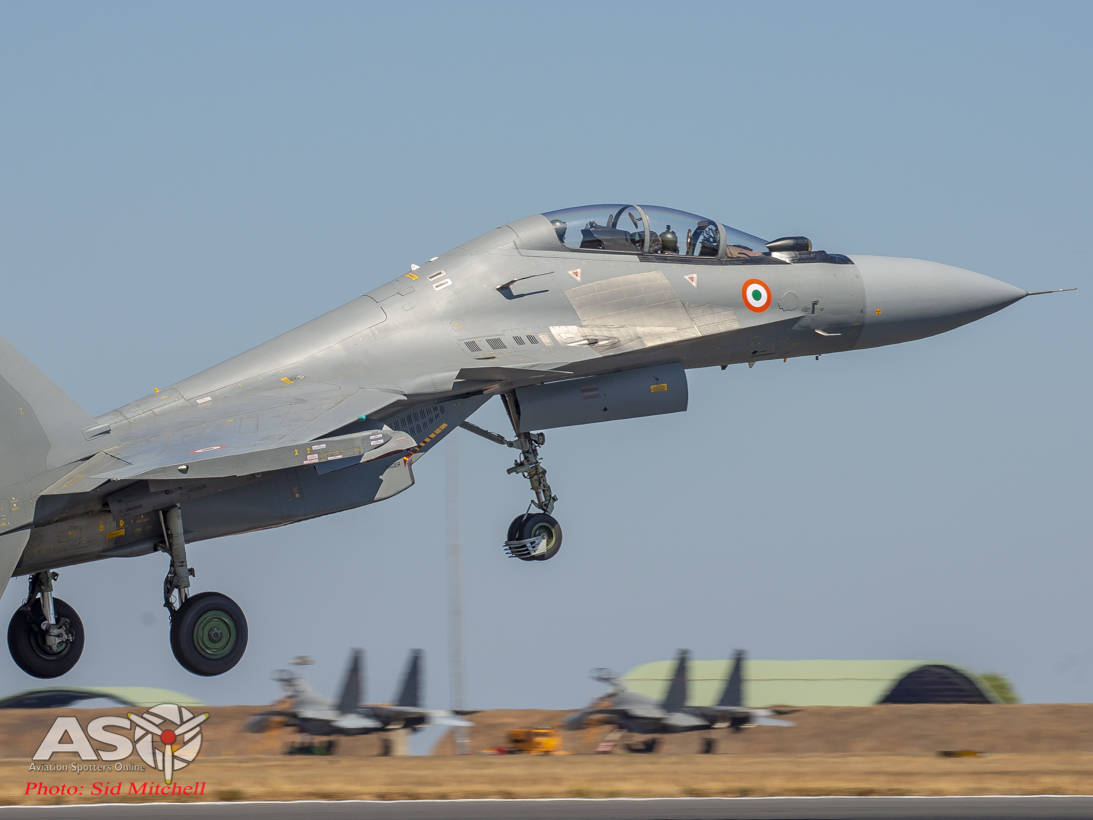
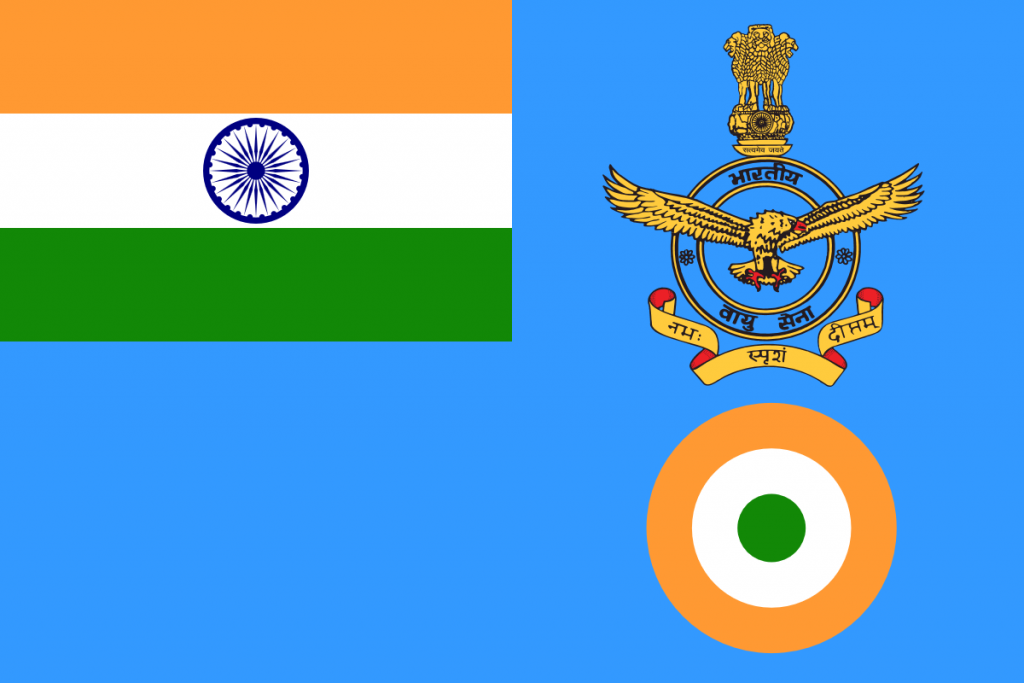
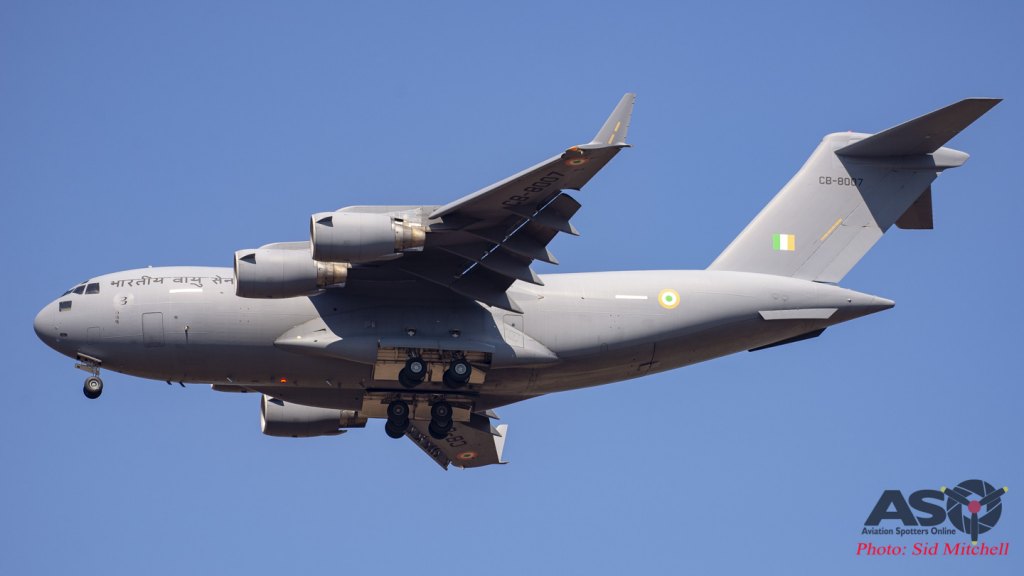

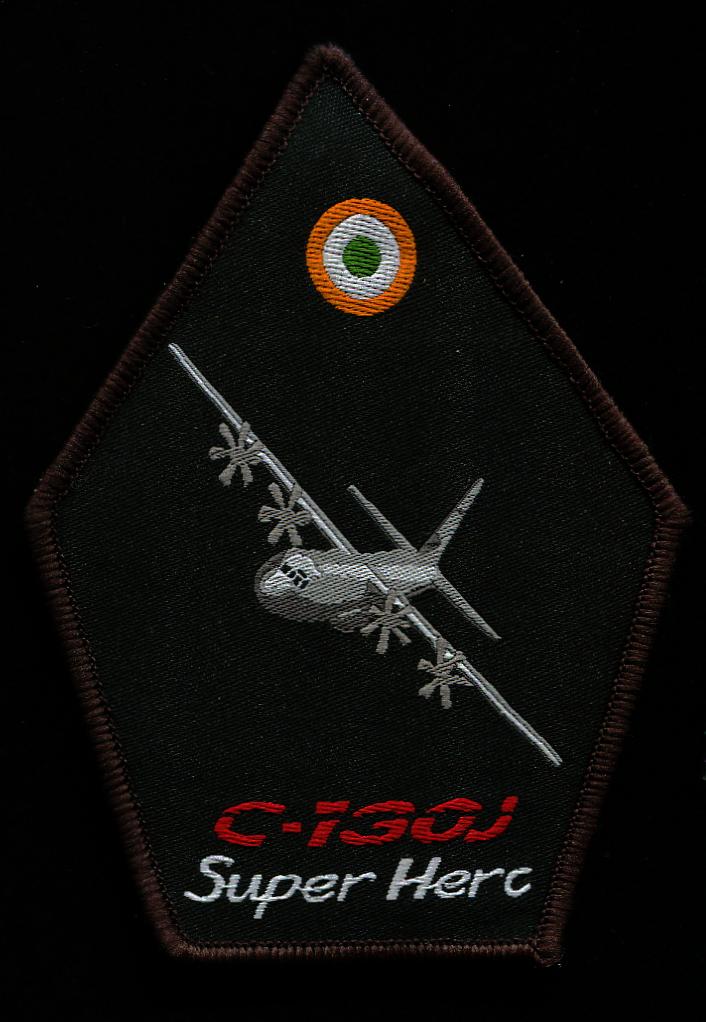
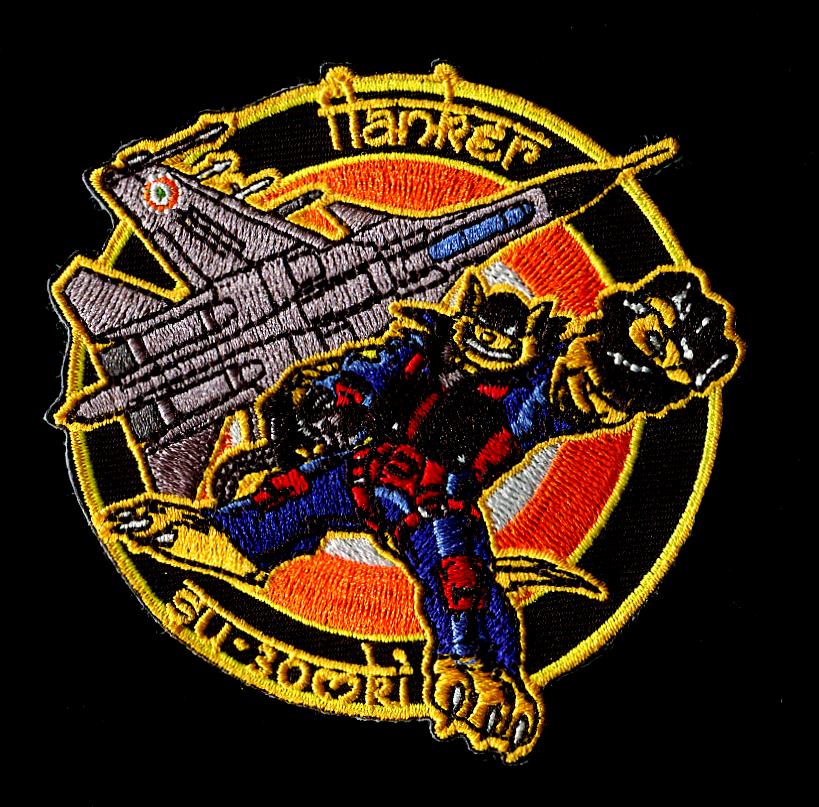





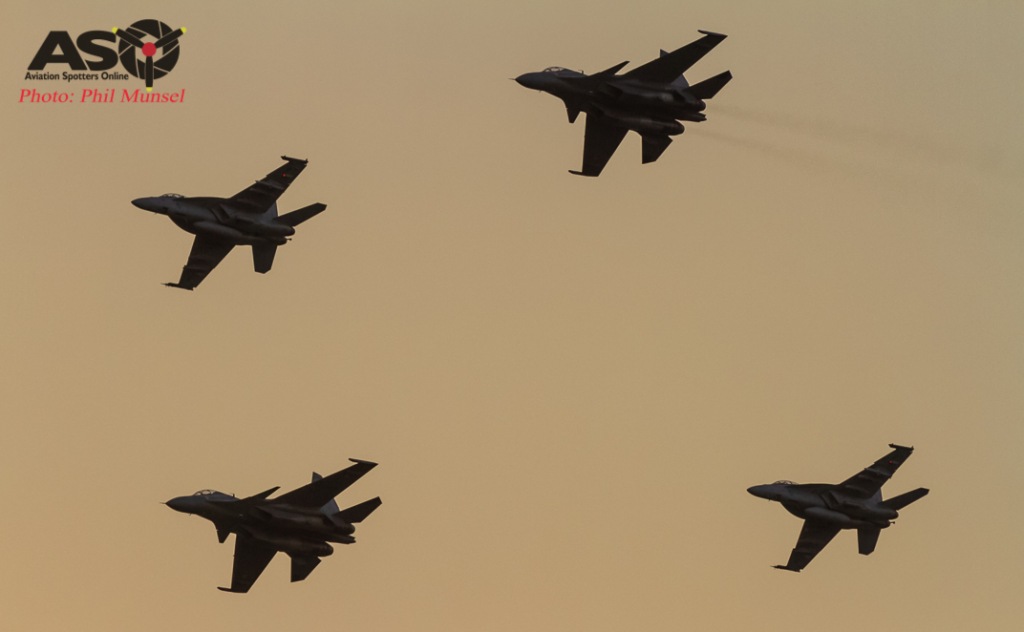

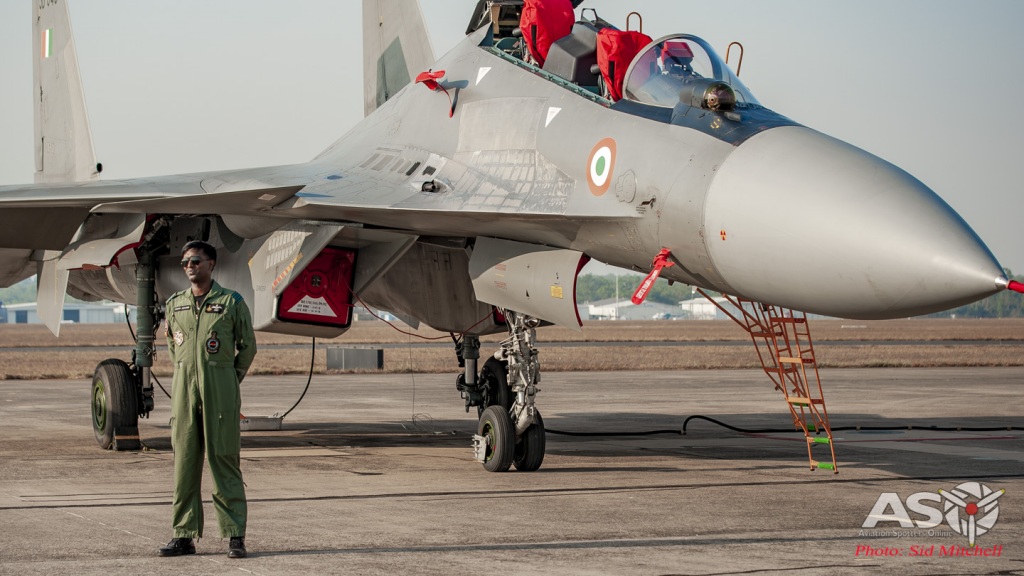

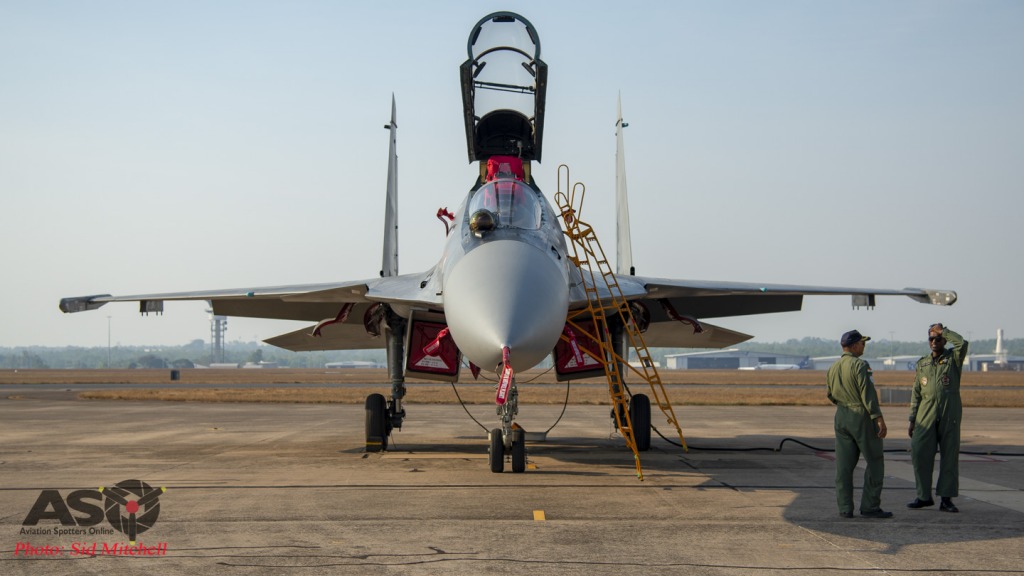
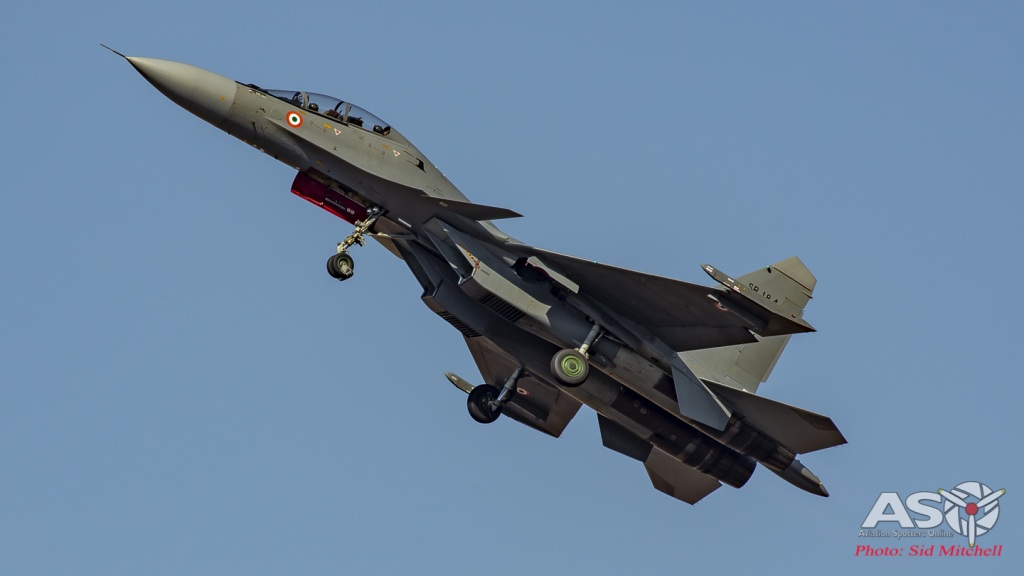






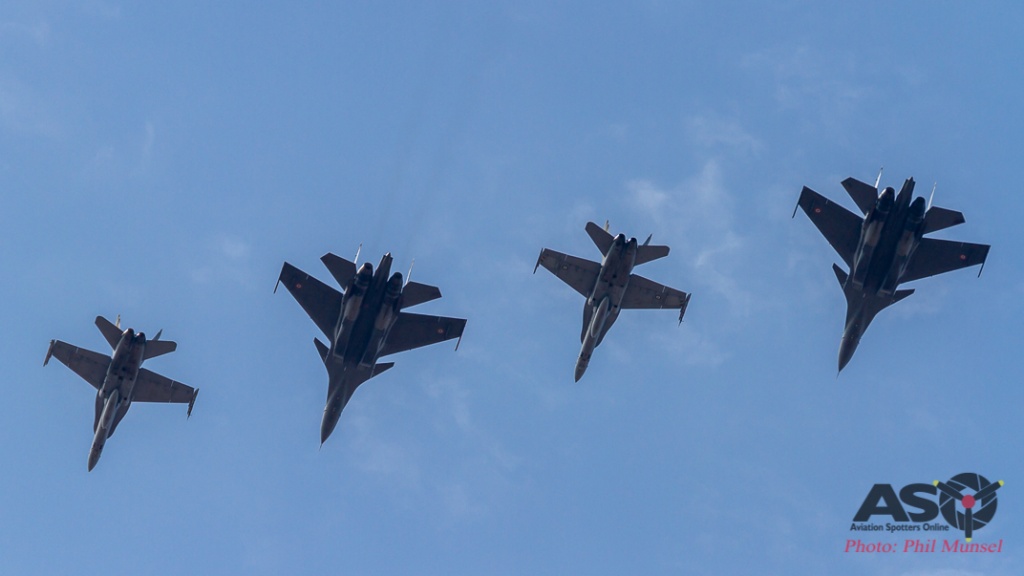
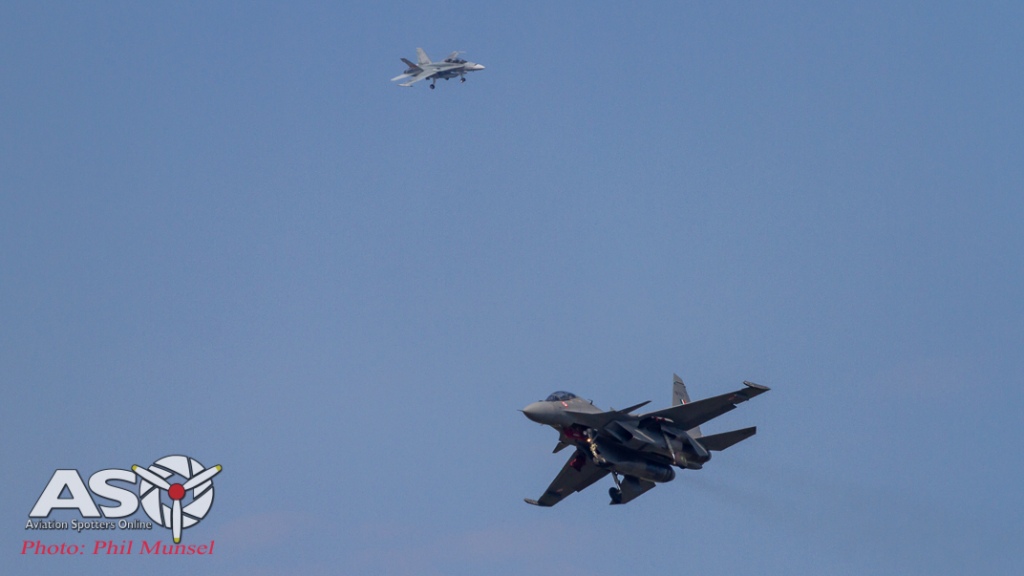
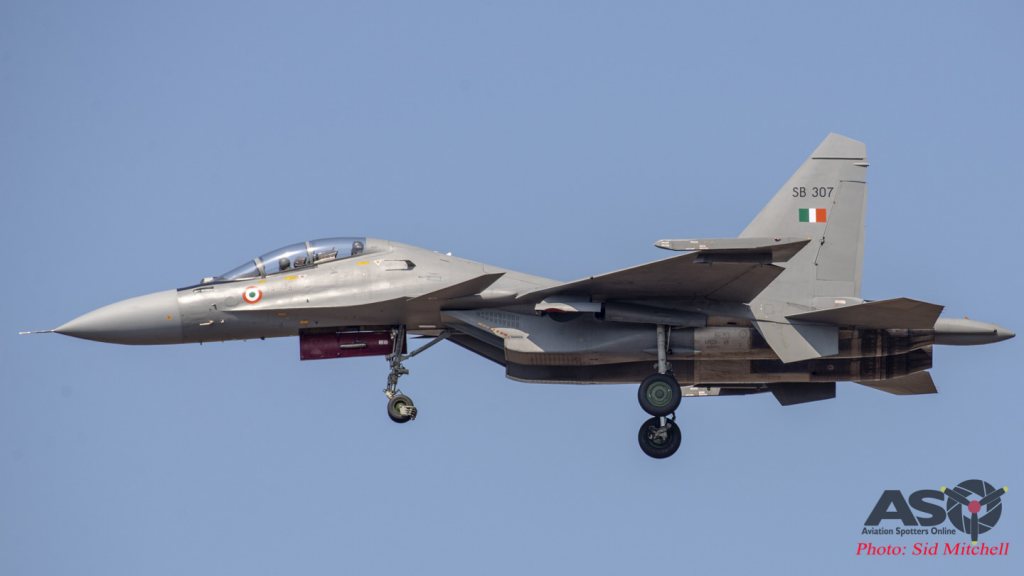
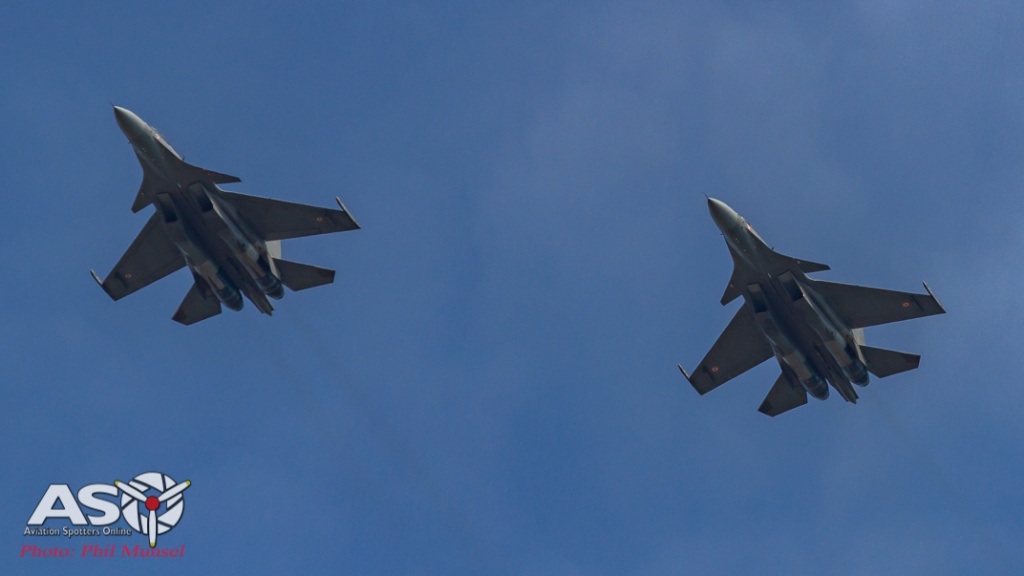
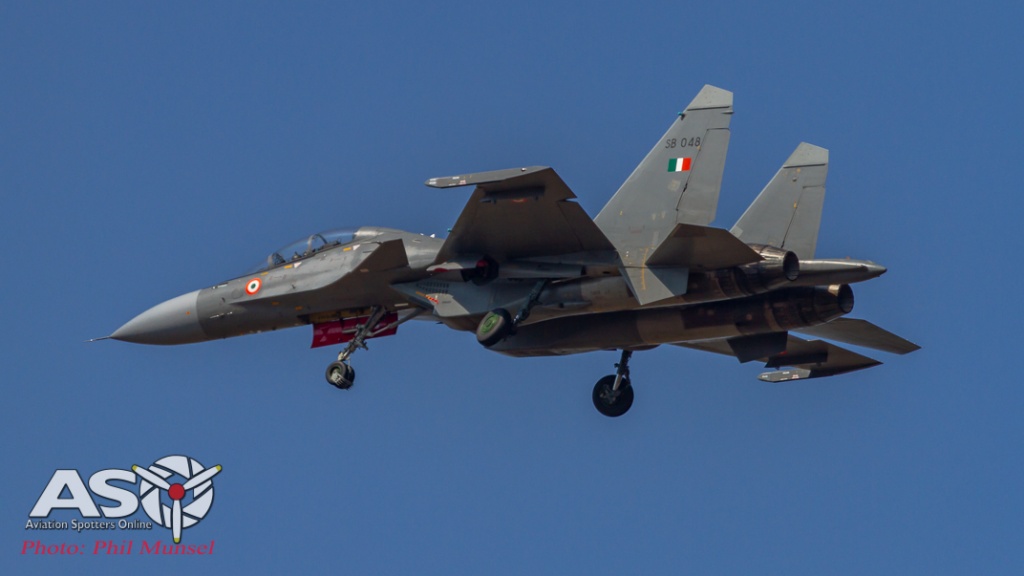

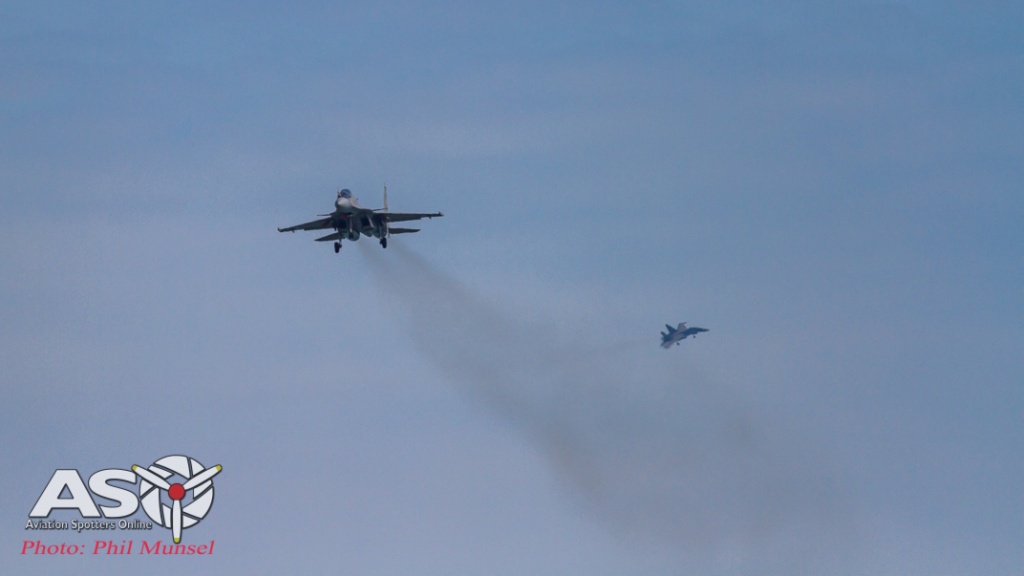


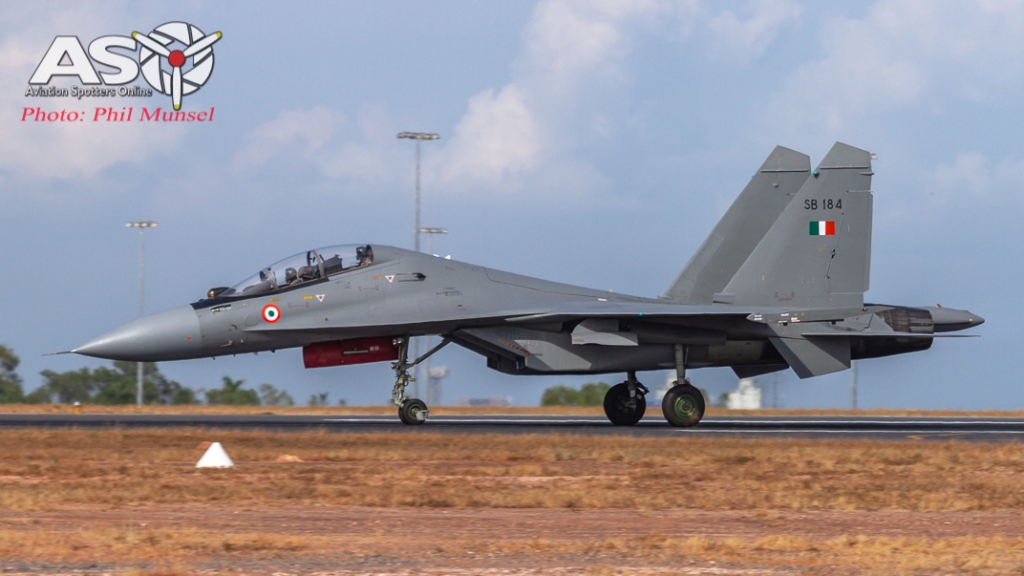
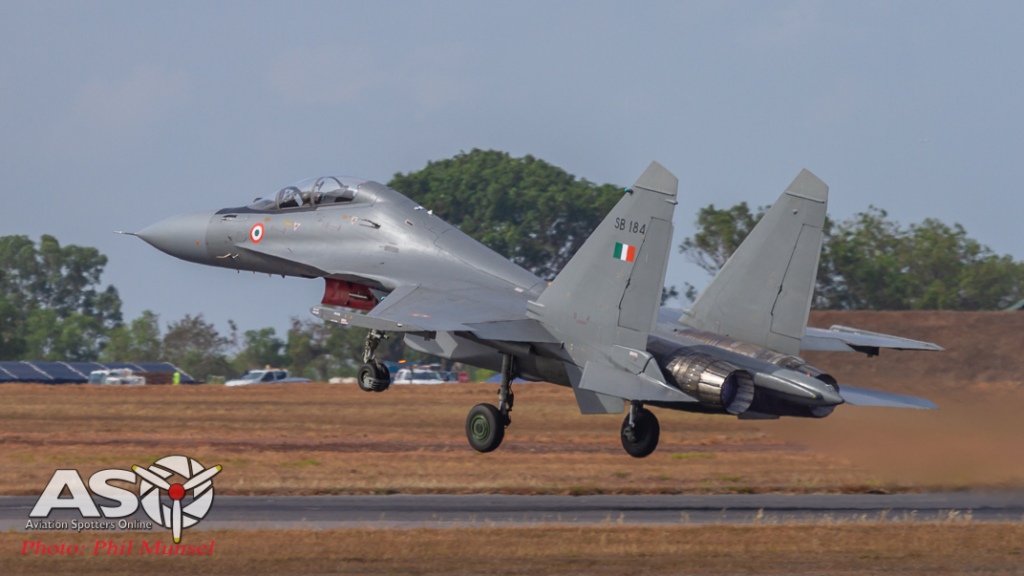


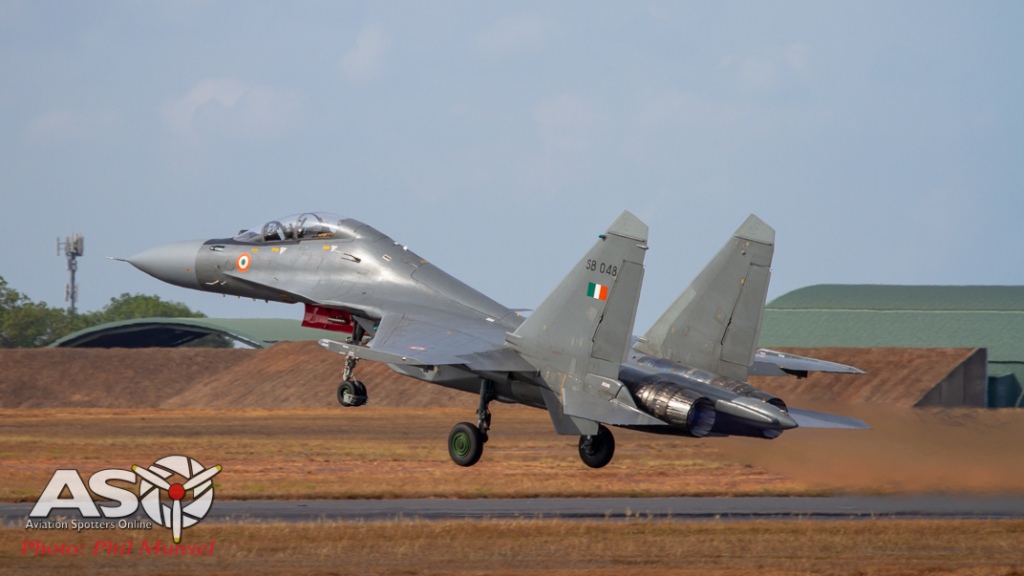
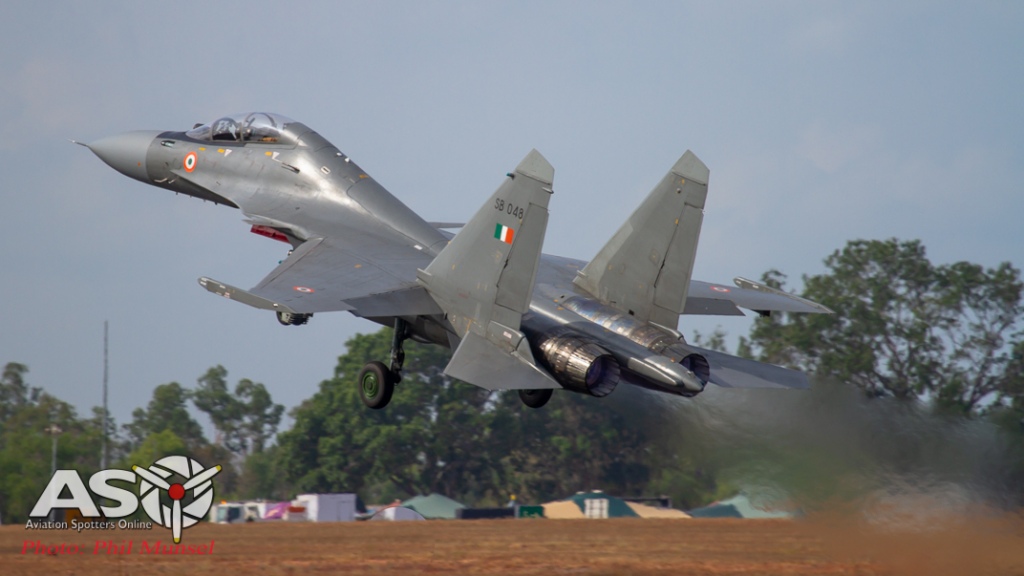
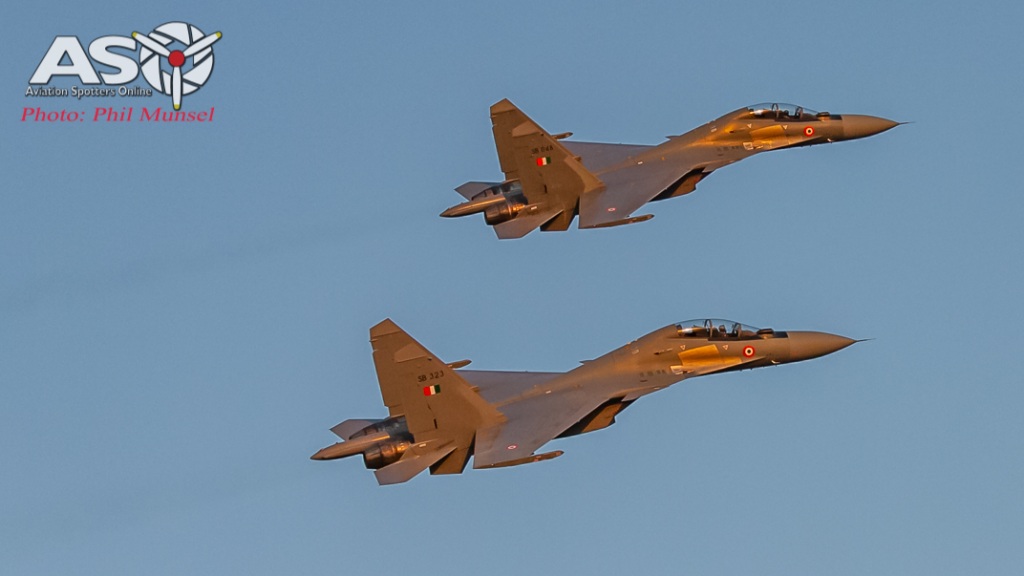

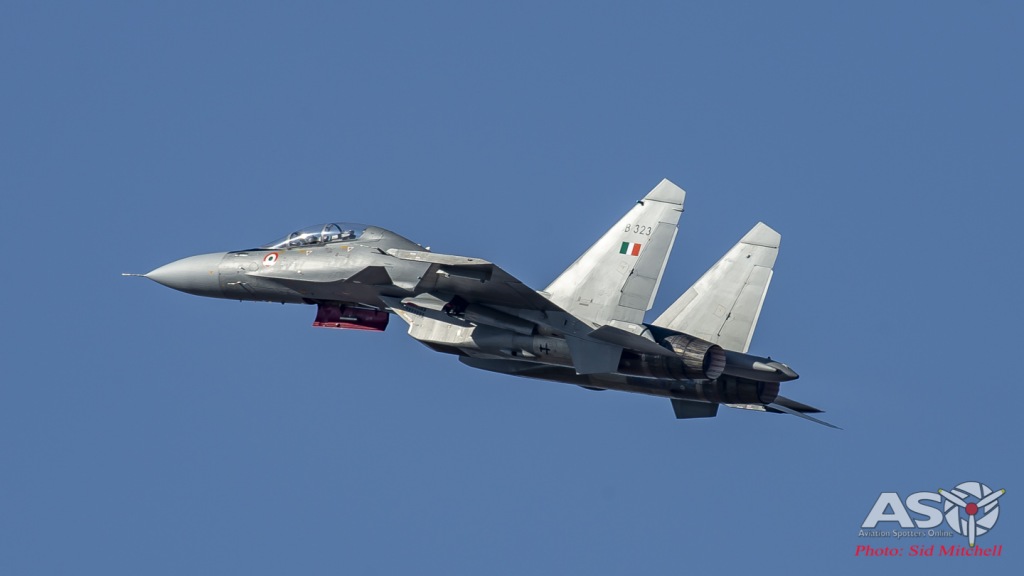
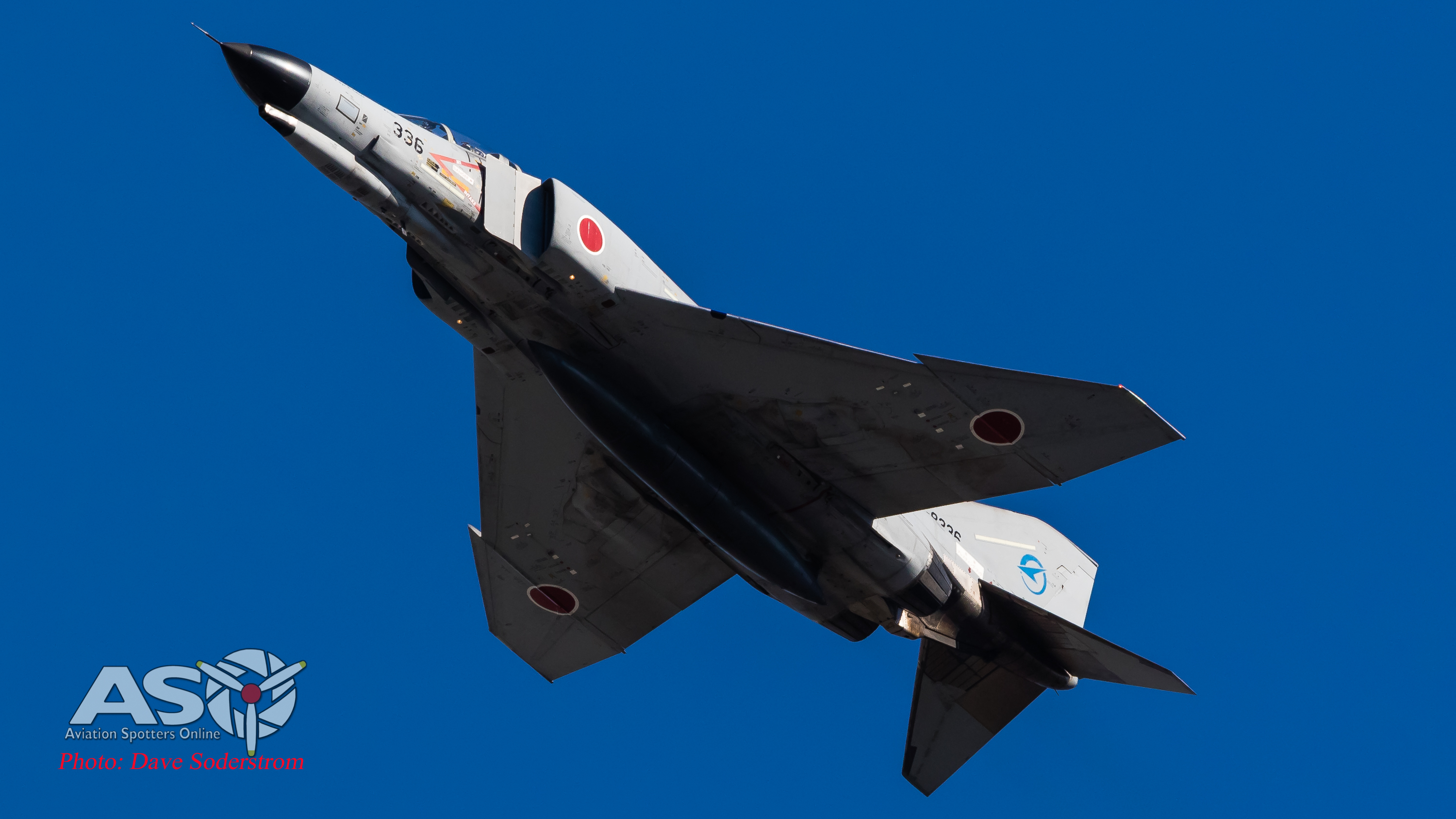







Great article Mark, especially the video.
Thank you kindly Ian, stay tuned as I’m currently editing more vision from the Exercise.MP
Great work here Mark, very comprehensive. If you were only going to attend one Pitch Black, something tells me this was the one.
Thank you Tony, it certainly was the one to be at, those Su-30MKI’s are magnificent machines. MP
Great article very comprehensive and informative, the video was “I wish I was there” type. Keep up the good work ASO